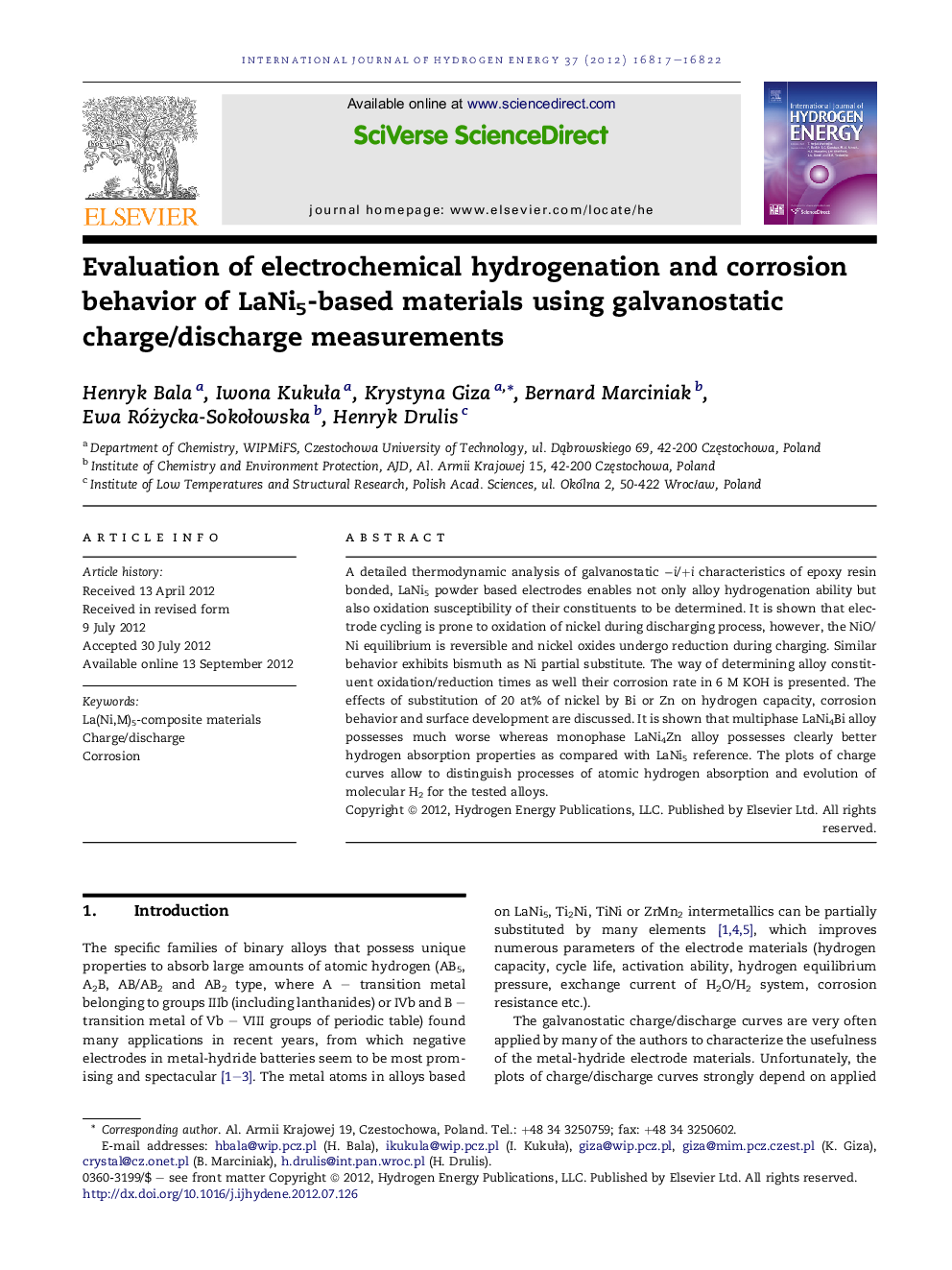| Article ID | Journal | Published Year | Pages | File Type |
|---|---|---|---|---|
| 1270862 | International Journal of Hydrogen Energy | 2012 | 6 Pages |
A detailed thermodynamic analysis of galvanostatic −i/+i characteristics of epoxy resin bonded, LaNi5 powder based electrodes enables not only alloy hydrogenation ability but also oxidation susceptibility of their constituents to be determined. It is shown that electrode cycling is prone to oxidation of nickel during discharging process, however, the NiO/Ni equilibrium is reversible and nickel oxides undergo reduction during charging. Similar behavior exhibits bismuth as Ni partial substitute. The way of determining alloy constituent oxidation/reduction times as well their corrosion rate in 6 M KOH is presented. The effects of substitution of 20 at% of nickel by Bi or Zn on hydrogen capacity, corrosion behavior and surface development are discussed. It is shown that multiphase LaNi4Bi alloy possesses much worse whereas monophase LaNi4Zn alloy possesses clearly better hydrogen absorption properties as compared with LaNi5 reference. The plots of charge curves allow to distinguish processes of atomic hydrogen absorption and evolution of molecular H2 for the tested alloys.
► The corrosion behavior of the La(Ni,M)5-composite materials was investigated. ► Charge curves allow to reveal two steps of water reduction process. ► The presence of Bi in the alloy worsens oxidation resistance of the alloy. ► Zn addition does not affect corrosion resistance.
